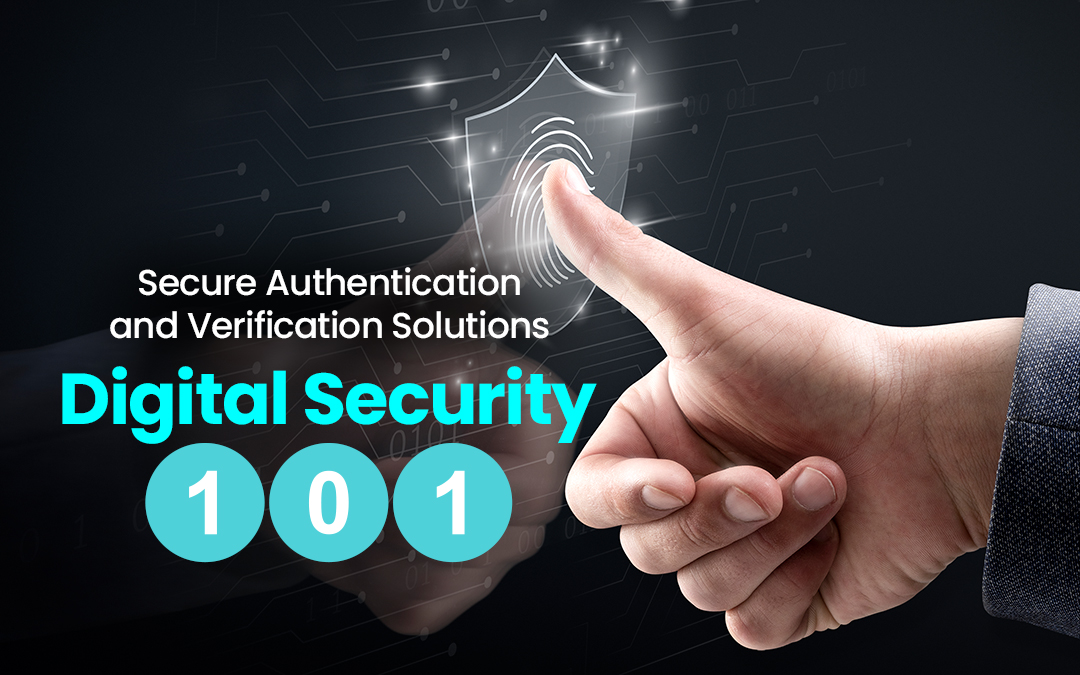
Securing your personal and business information is critical. Cybercriminals are constantly evolving their tactics, and the need for secure authentication and verification solutions has never been greater. Effective security measures help protect sensitive data, reduce risks, and maintain the integrity of your digital operations.
Staying informed about the latest threats and understanding how to counter them is essential. Building a strong security framework and taking a proactive approach helps you create a resilient defense against potential cyberattacks.
Multi-Factor Authentication (MFA)
Multi-factor authentication (MFA) is one of the most reliable ways to safeguard your digital accounts. It requires users to present two or more verification factors, making unauthorized access far more challenging for potential attackers.
The Importance of MFA
Relying solely on passwords makes your accounts vulnerable, especially with the widespread reuse of weak passwords. MFA adds an extra layer of security by requiring multiple forms of identity verification, such as a password and a biometric scan. This significantly reduces the chances of an intruder gaining access even if they have your password.
Types of MFA Methods
- Something You Know: This typically involves a password or a PIN code.
- Something You Have: This could be a smartphone, security token, or smart card used to confirm your identity.
- Something You Are: Biometric factors, such as fingerprints, facial recognition, or iris scans, ensure that only you can gain access.
Combining these factors makes it extremely difficult for an attacker to breach your accounts. Implementing MFA is crucial for both personal and business-related activities where sensitive information is handled.
Biometric Verification
Biometric verification adds a layer of security based on your physical characteristics. Unlike passwords or tokens, biometric traits are difficult to replicate, making this form of verification highly secure.
- Fingerprint Recognition: Fingerprint scanners are becoming more common in consumer electronics, allowing for quick and reliable access.
- Facial Recognition: Widely used in mobile devices, facial recognition technology captures and analyzes facial features to verify identity.
- Voice Authentication: Some systems use voice patterns to verify identity, which adds convenience as well as a unique security factor.
Benefits and Limitations
The primary benefit of biometric verification is that it’s unique to you and difficult for attackers to duplicate. However, biometric data must be handled with care.
A breach involving biometric information can have severe consequences since you can't easily change your fingerprint or face the way you can change a password. Choosing solutions that encrypt and securely store biometric data helps mitigate these risks.

Passwordless Authentication
Passwordless authentication is growing in popularity as a more secure alternative to traditional password-based systems. It eliminates the risks associated with weak passwords and the hassle of remembering them.
How Passwordless Works
Passwordless authentication uses other forms of verification, such as email links, mobile push notifications, or biometrics, to grant access. Once you initiate a login attempt, a unique link or code is sent to a trusted device or app, which is then used to verify your identity.
Advantages of Going Passwordless
- Eliminates Weak Passwords: With no passwords involved, you don’t need to worry about weak or reused passwords being exploited.
- Better User Experience: Passwordless methods reduce friction, making logging in simpler and faster.
- Reduced Phishing Risk: Passwordless approaches mitigate the risk of phishing attacks, as there’s no password for attackers to steal.
For businesses, adopting passwordless authentication can enhance security while improving user convenience. This approach is particularly beneficial for applications and systems with frequent access requirements.
Public Key Infrastructure (PKI)
As businesses and developers aim to secure communications, they often look for tools that streamline secure interactions. This includes software development kits providing the functionality needed to implement secure and compliant digital signatures in applications. By using a digital signature SDK, you can easily integrate features that authenticate documents and ensure the integrity of the data being exchanged.
Public Key Infrastructure (PKI) is a sophisticated yet powerful method used for secure communications and authentication. It provides a way to securely exchange data through digital certificates and cryptographic keys.
How PKI Works
PKI relies on a pair of keys—a public key and a private key. The public key is shared openly, while the private key remains secret. Data encrypted with the public key can only be decrypted by the corresponding private key, and vice versa. This ensures that only intended parties can access sensitive information.
Role in Secure Authentication
- Digital Certificates: Certificates authenticate the identity of people, devices, or services online, helping to prevent impersonation attacks.
- Encryption and Signature: PKI enables secure data transfer and digital signatures, ensuring both confidentiality and authenticity of information.
Businesses use PKI to secure email communications, and online transactions, and verify digital identities. For businesses, PKI enhances both security and trust when dealing with clients and partners.
Mitigating Hacker Attacks
Hacker attacks are a constant threat, and understanding how to mitigate these attacks is crucial for protecting your digital assets. Cybercriminals employ various tactics to breach security, but staying vigilant and adopting comprehensive defense strategies can help minimize the risk.
Recognizing Signs of a Hack
Recognizing the signs of a hack can help you take swift action to mitigate damage. Suspicious activities, such as unauthorized transactions, unexpected password changes, or unusual login locations, are common indicators of a potential breach. If you ever find yourself in a situation where you need to know what to do if you've been hacked, acting quickly is essential. Start by changing compromised passwords, enabling multi-factor authentication, and notifying relevant service providers.
Steps to Mitigate Attacks
- Network Monitoring: Monitoring network traffic can help you detect abnormal activities early, allowing for a quick response before significant damage occurs.
- Regular Software Updates: Keep your systems and applications up to date to protect against known vulnerabilities that hackers might exploit.
- Incident Response Plan: An incident response plan provides a coordinated approach to containing and mitigating the effects of a hack, ensuring that all stakeholders know their roles in the event of an attack.
Risk-Based Authentication
Risk-based authentication evaluates the potential risk of a login attempt before allowing access. Unlike traditional methods, it adapts to the security requirements based on the situation, ensuring a balance between convenience and security.
This method considers factors such as the user’s location, the device being used, and the timing of the login attempt. It triggers additional verification steps if the system detects something unusual—like a login attempt from an unfamiliar country.
Implementing Risk-Based Strategies
- Behavioral Analysis: Examines past user behavior to determine if a current request is legitimate. For example, logging in from a different device may require additional verification.
- Contextual Data: Uses contextual information, such as IP address or geolocation, to assess the risk of granting access.
This type of adaptive security helps prevent unauthorized access without putting unnecessary burdens on users. It provides an effective way to catch suspicious activity while allowing legitimate users to log in without friction.
Conclusion
Digital security is an evolving challenge that requires a proactive approach to protect your data and systems. From multi-factor authentication to biometric verification and passwordless solutions, various methods can bolster your security posture. These tools make it increasingly difficult for attackers to breach your accounts, keeping both your personal and business information safe.
The key to effective digital security is finding the right combination of authentication and verification techniques that fit your needs. By understanding and implementing these secure practices, you’ll be better equipped to manage the risks that come with the digital age.
Share this post
Leave a comment
All comments are moderated. Spammy and bot submitted comments are deleted. Please submit the comments that are helpful to others, and we'll approve your comments. A comment that includes outbound link will only be approved if the content is relevant to the topic, and has some value to our readers.

Comments (0)
No comment